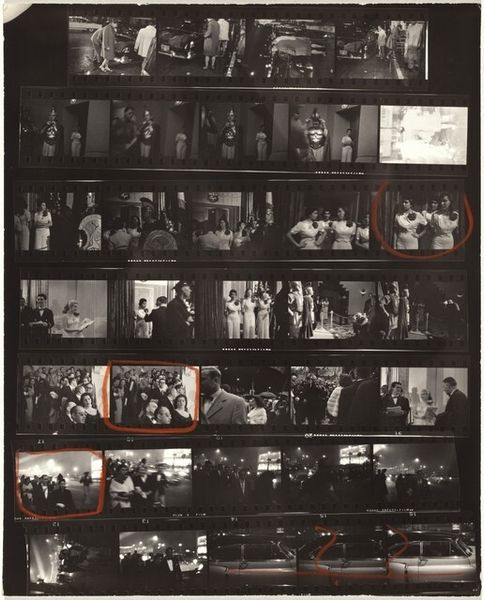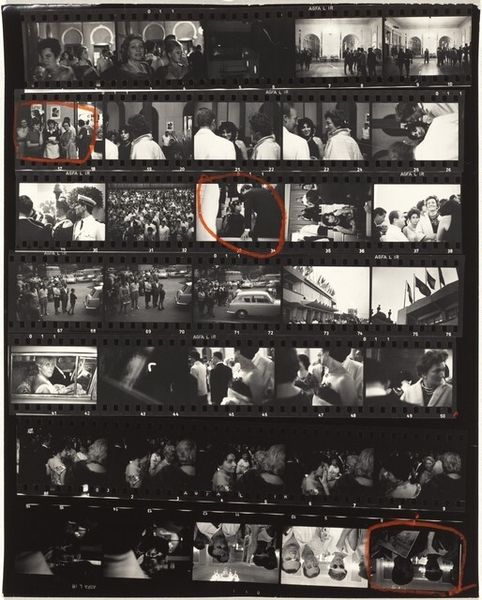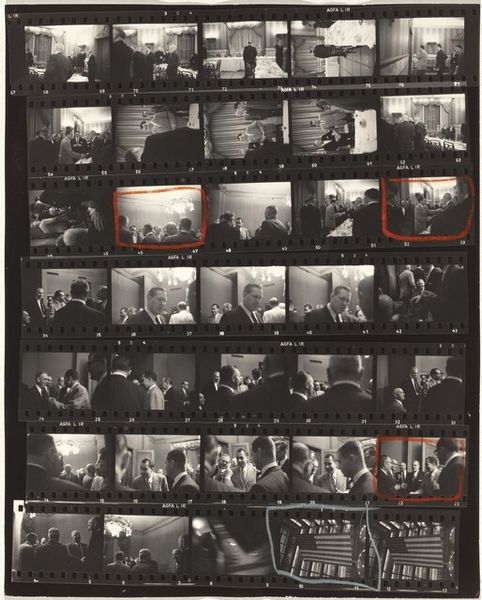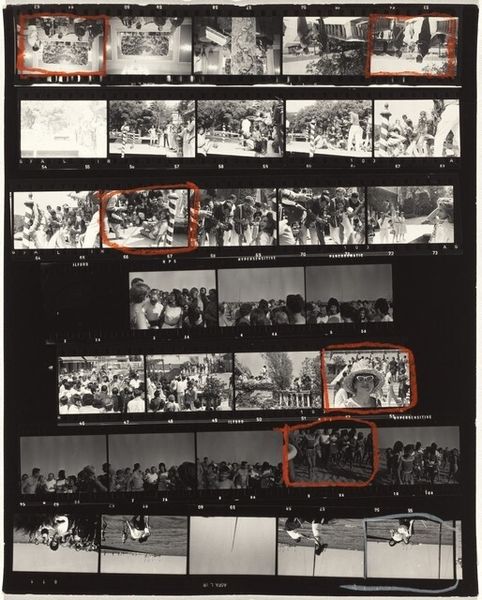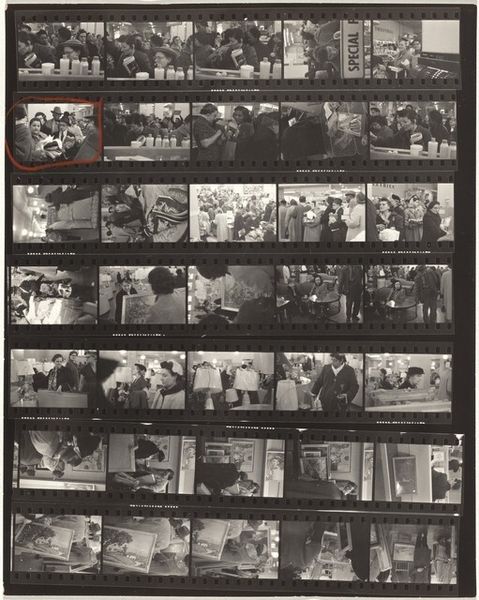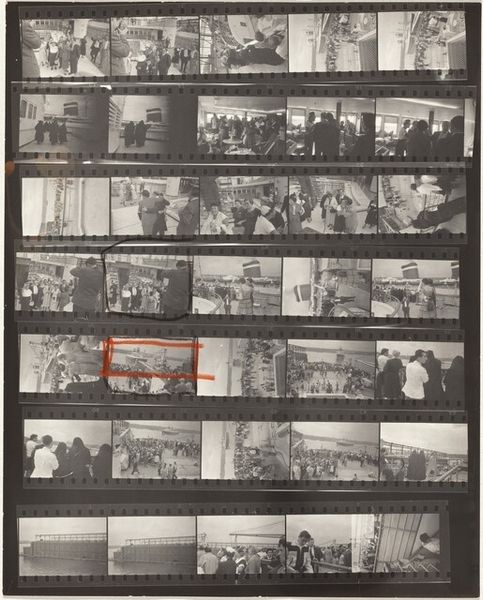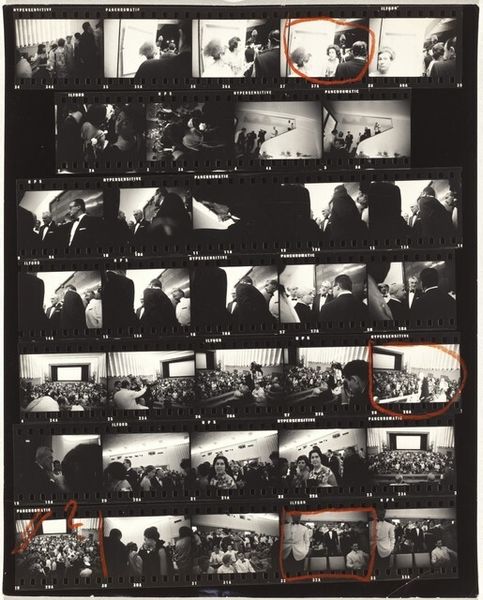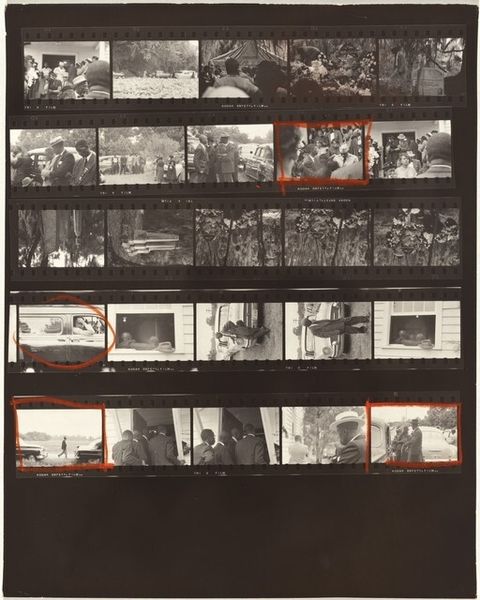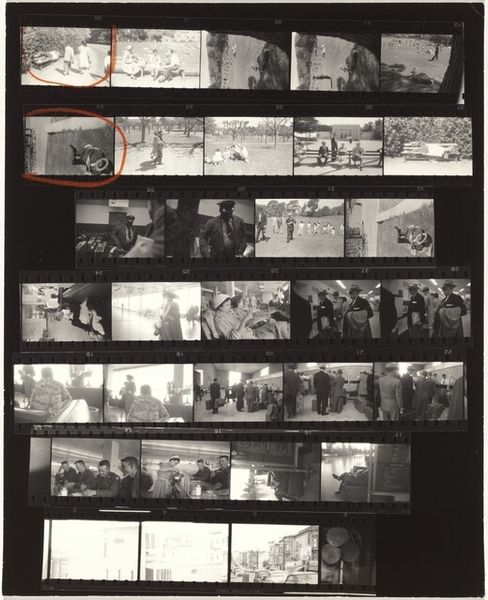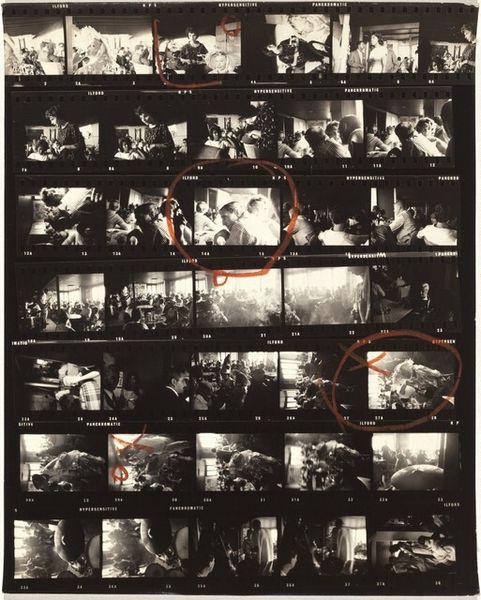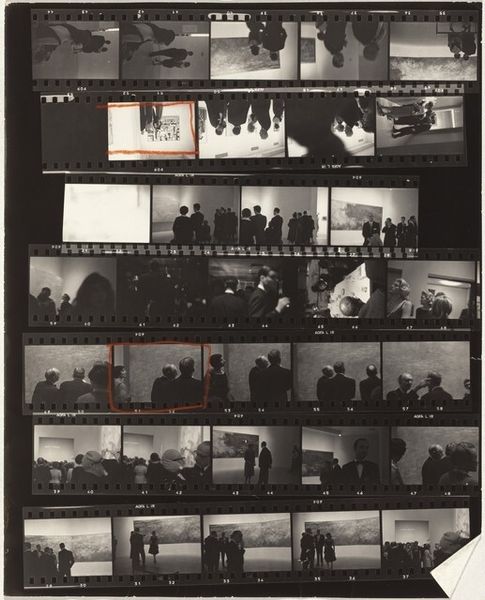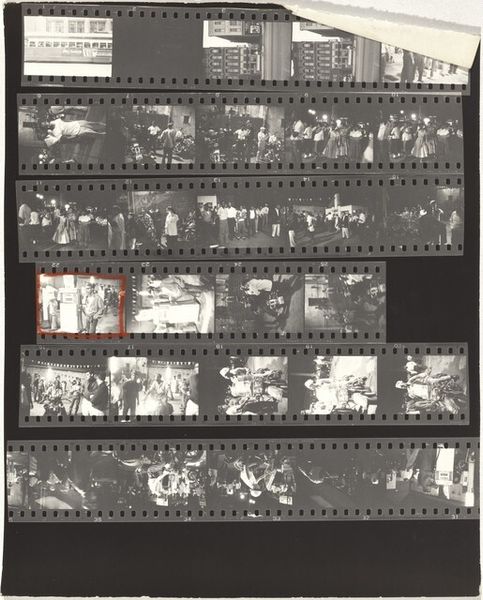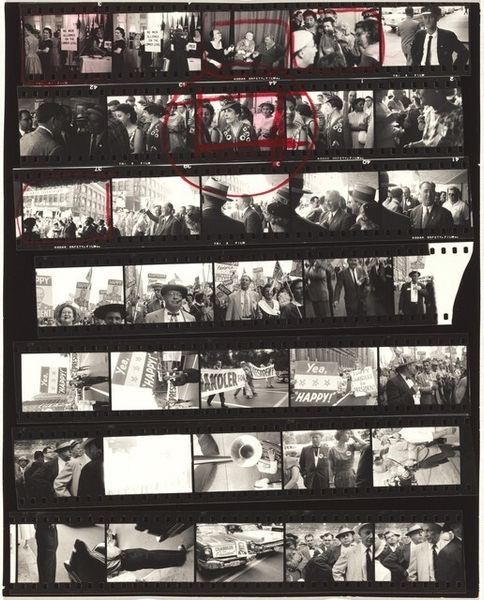
Dimensions: overall: 25.2 x 20.2 cm (9 15/16 x 7 15/16 in.)
Copyright: National Gallery of Art: CC0 1.0
Editor: This is “Claes Oldenburg happening 1,” a gelatin-silver print from the 1950s by Robert Frank, showing strips of photographic film capturing what looks like a performance. It's presented as a whole roll of film…sort of raw, like uncut scenes from a play. What’s your take on its symbolism? Curator: Well, consider the film strip itself – it's not just a medium, but a narrative device. Each frame captures a fragmented moment of a “happening,” hinting at rituals or social interactions. Notice how Frank highlights certain frames, almost like focusing on specific symbols. The darker color palette too has impact. What sort of cultural memories do you suppose this palette invokes? Editor: I hadn’t considered the darkness! I suppose, considering it’s from the 50s, it might suggest the anxieties and uncertainties of the Cold War era, filtered through the lens of performance art. But what about the "happening" itself? Does it hold any specific symbolic weight, or is it more about capturing the spontaneity of the moment? Curator: The spontaneity is crucial, but it’s also carefully constructed, don't you think? "Happenings" were about blurring the lines between art and life, and these blurry lines became symbols. Consider, the repetition of faces and settings within the strip suggests communal experiences. Think about the continuity and repetition. Editor: So the photographic process captures a unique communal moment, but also freezes it. The symbols, while tied to the event itself, can speak to broader social narratives. Thanks, I'm seeing a richer layer here! Curator: And by understanding those layers, we gain insight into how artists reflect and shape cultural memory, making art relevant over time.
Comments
No comments
Be the first to comment and join the conversation on the ultimate creative platform.

